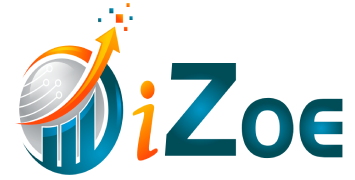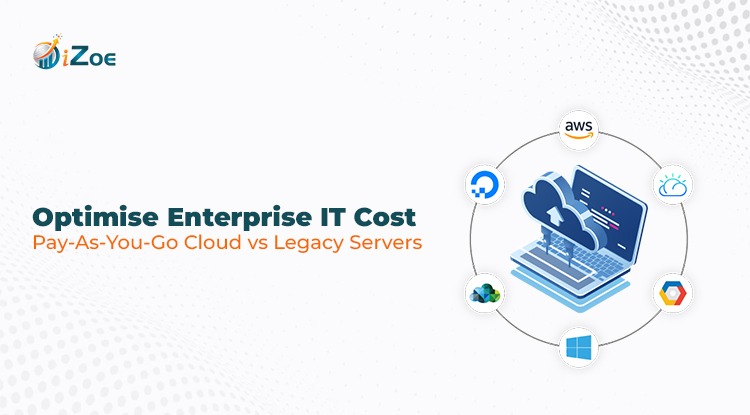How does your IT bill compare?
Are you still dumping money into sluggish, outdated servers when your competition is cutting expenses and scaling up with the cloud? If you’re undecided, you’re not the only one. Let’s lay out why so many companies are switching—and why now is the perfect time to maximize the cost savings of pay-as-you-go (PAYG) cloud.
The Legacy Server Struggle-Sound Familiar?
Imagine this: You shell out a small fortune for large servers in the hopes they will last five years. Business is unpredictable however, At times your gear goes unused, and when traffic is high, those same servers have you scrambling for more.
Upfront cost: Huge up-front payment before you receive any benefit.
Overprovisioning: Purchase more than you require “just in case”—resulting in waste.
Maintenance headache: On-prem servers require continuous power, real estate, cooling, IT staff, and upgrades.
Scaling headaches: Want more horsepower? Look forward to delays, high expenses, and pain.
Ring a bell? For most, this was “just the way IT worked”—before the cloud demonstrated a smarter way.
Say hello to Pay-as-You-Go Cloud: Game Changer or Fad?
Suppose you have a seasonal business—legacy servers, and you’re paying through the nose year-round. The cloud turns this equation on its head:
No up-front expense: Spin up servers in seconds, only pay for what you consume.
Elastic scaling: Scale computing power up or down in an instant as business fluctuates.
No wasted spend: No more racks of idle servers wasting money.
Provider-managed chops: No worries about replacing failing drives or patching software.
Transparent billing: Real-time dashboards enable you to monitor spend and turn off impending overages before shocks strike.
Customers often say, “I wish we’d migrated earlier—our finance people love monthly predictable spend!” And sure enough, studies indicate cloud cost optimization can help businesses save 30% or more compared to ancient hardware servers.
What Do You Really Gain By Making the Move Cloud PAYG?
Instant agility. Need to try new software or enter a new market? Try it within minutes, not months.
Right-size, each time. Match resources to actual demand without over-provisioning.
More IT productivity. Allow your staff to devote time to innovation, rather than hardware babysitting.
Business continuity built in. Top cloud providers provide backups, disaster recovery, and worldwide reach automatically.
But… Isn’t Cloud PAYG Sometimes Uncertain?
Yes, if you don’t use the proper cost controls. Here’s how savvy businesses manage it:
- Establish automated alerts to detect overspending.
- Scales workloads and retires idle resources.
- Utilize cloud savings plans, committed use discounts, or free tier use when suitable.
- Educate teams—cost awareness is now everyone’s job!
Cloud vs. Legacy: Rapid Fire Comparison Table
| Feature | Legacy Server | Pay-as-You-Go Cloud |
| Upfront Expense | High | None / Low |
| Scaling | Slow, expensive | Instant, simple |
| Paying for Idle Time | Always | Never |
| Maintenance | Manual, expensive | Automated |
| Budgeting | Fixed, inflexible | Adaptable, transparent |
Conclusion
For true cost optimization, greater business agility, and a budgeting process your CFO will love, the Pay-as-You-Go cloud model clearly outperforms traditional servers. It doesn’t just reduce costs – it makes innovation and resilience simpler for every business.
At iZoe, we help companies make this transition seamless with our Enterprise cloud solutions, tailored cloud strategies, and end-to-end support. Whether it’s scalability, secure backup, or cost transparency, we ensure your business gets the best of cloud without the headaches of legacy systems.
Ready to break the habit of overspending? Let iZoe guide your shift to smarter cloud adoption today.
FAQs
Q: How do I manage my PAYG cloud expense?
Utilize built-in cloud dashboards, automate alerting, monitor workloads regularly, and terminate idle services. Several organizations employ a “FinOps” practice merging finance and ops to maintain a lean cost.
Q: I have sensitive or regulated information. What can I do?
Most clouds are compliant with key regulations (GDPR, HIPAA, etc.)—but always double-check for your industry and implement additional controls as necessary.
Q: Migration is difficult?
It requires planning, but most companies begin with smaller, non-mission-critical projects. Many cloud providers have migration support and incentive programs.

